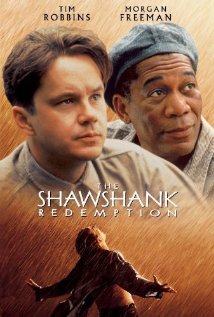Cinematic
Carcerality: Prison Metaphors in Film
Metaphors
are sometimes to see. First you must know what a metaphor is. Per the website dictionary.com,
a metaphor is when you use a word or phrase to compare two objects that are not
alike. For example the phrase “you’re turning a mole hill into a mountain”. In
no way are they comparable but you understand the point of the statement which means
that you are making something small into something big. Metaphors are used in
everyday life, especially books and cinema. I will be discussing the prison
metaphor in this paper.
The article I analyzed is titled Cinematic
Carcerality: Prison Metaphors in Film by Jan Alber. In this article, Alber discusses the
use of prison metaphors in film and the various ways they can be used to create
an unwritten statement. In society as a
whole, we have grown to relate to film in many ways and metaphors create an
even deeper connection to the story being told. The article discusses the
analysis of Monika Fludernik and Charles Forceville and their interpretations
of metaphors used in film. Fludernik states that there are two types of prison
metaphors which is that prison is used as a tenor (Prison is X) and proper
metaphors where prison is the vehicle (X is prison). Secondly, she reviews Forceville’s analyzis
of pictorial metaphors. Throughout the article several examples are given to
discuss how metaphors can be used to portray a thought or specific feeling. One
example given was in John Fowle’s 1969 novel The French Lieutenant's Women, where Charles Smithson thinks of his
engagement as a “prison sentence”. The
film depicts a prisoner walking free and then is jerked down by chains into his
cell. This metaphor was indicating that even in a free world, we are still
restrained (Alber).
Next,
Alber discusses Forceville’s views into how pictures instead of words are used
as metaphors in film. One example given was when the uniform of one prisoner
blends in with the guards and the government officials. This pictorial metaphor
is implying that guards and government officials are “imprisoned” by their work
just like the prisoner. Next, one of my favorite prison metaphors is in the
film, Lost Highway where David Lynch
shows moths dying in a ceiling light during their quest to fly into the
light. This metaphor is used to show the
degree of desperation of main character who is obsessed with his lover so much
that he is close to self- destruction. When his lover tells him that she will
not be able to see him, the film quickly shows a close up of his face and then
moves to the moth scene. At that moment you can feel how her statement of not
being with him had completely killed him inside. This example is a called a
juxtaposition of disparate elements, meaning elements without obvious
similarities. Alban lists the following ways that metaphors can be integrated
into films:
·
Juxtaposition
of disparate elements
·
Through
interplay between the auditory and visual level
·
Matching
Shots
·
Distortions
·
Focusing
on the same entity in two different scenes
·
Context
·
Superimposition
of two distinct images
Overall, I agree with the author’s main points and this article is definitely important in many ways. Reading this article gave me a whole new insight to the importance of screenwriting and how hidden metaphors are created. I learned a new perspective on the topic of prison metaphors and how important they are and convey significant connotations throughout. I have already seen The Shawshank Redemption, but I plan on watching some of the other movies listed within the article so I can see the metaphors that have been described. This article is important because it explains the reason behind metaphors and how to recognize them in film. Metaphors help us to understand a concept or thought in a new way or from a different viewpoint.
References
Alber, Jan. (April 2011). "Cinematic
Carcerality: Prison Metaphors in Film." Journal of Popular
Culture, Vol. 44 Issue 2, pp. 217-232, 16p.
Retrieved from: http://0-journals.ohiolink.edu.olinkserver.franklin.edu/ejc/article.cgi?issn=00223840&issue=v44i0002&article=217_ccpmif
Dictionay.com. (2013).
Metaphor. Retrieved July 26, 2013, from



Wow! I wish I read your article, I found it very interesting! I really liked how it talked about 3 different movies as it gave you a better idea of the point the author was trying to get across. I haven't seen the first two movies but I have seen Shawshank and I think the article hit the movie spot on with how Andy portrays himself in the movie. Your article sounds very awesome, good pick!
ReplyDeleteGreat article. I love the way that using metaphors help the viewers to gain a more in depth understanding of what the writers are wanting you to feel. This use of metaphors in writing a script has to be carefully thought through as to intrigue your audience and get them to understand the points that the writers are trying to get across along with the depth of these meanings. I have seen this done in some of the movies that I have watched with my kids, as an adult, I get more of the meanings behind these metaphors than my children do and it seems that I enjoy the movie more than they do because of this. Great analysis!
ReplyDelete